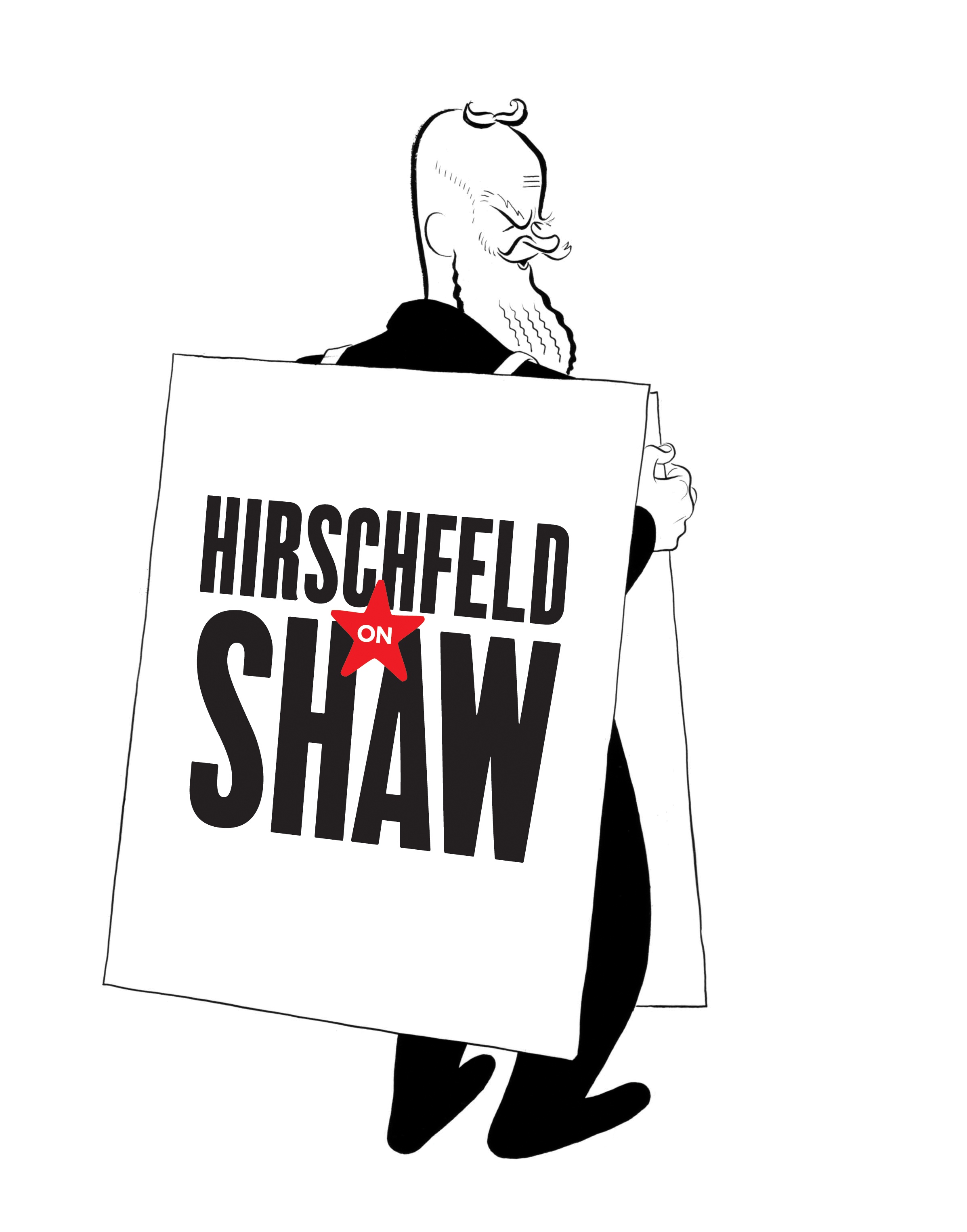Studio Director David Leopold’s latest project is a unique installation for the Shaw Festival celebrating Al Hirschfeld’s drawings of George Bernard Shaw’s productions in america over seven decades.
Over those seven decades, Hirschfeld saw most major Shaw productions on and off-Broadway. Beginning with the Theatre Guild’s Major Barbara (1929), Hirschfeld captured the quicksilver of Katharine Cornell’s Candida (1937, which Ben also drew), Orson Welles’ Heartbreak House (1938), Ingrid Bergman in Captain Brassbound’s Conversion (1972) and more than 30 other performances. Perhaps no other artist documented Shaw in America as thoroughly as Al Hirschfeld.
productions on and off-Broadway. Beginning with the Theatre Guild’s Major Barbara (1929), Hirschfeld captured the quicksilver of Katharine Cornell’s Candida (1937, which Ben also drew), Orson Welles’ Heartbreak House (1938), Ingrid Bergman in Captain Brassbound’s Conversion (1972) and more than 30 other performances. Perhaps no other artist documented Shaw in America as thoroughly as Al Hirschfeld.
Shaw and Hirschfeld both had lengthy active careers, great capacities for work, and wore beards. Hirschfeld’s modern calligraphic portraits, combining his journalistic eye and wit, not only show us what the productions look like, but they give us the essence of the performances through his distinct point of view. “My contribution,†Hirschfeld wrote, “is to take the character — created by the playwright and acted out by the actor — and reinvent it for the reader.”
Hirschfeld tried to convince Moss Hart that Shaw’s Pygmalion was not going to be improved with songs and dance…just as the playwright/director began work on My Fair  Lady. But soon Hirschfeld was literally drawn in as his poster art captured both the spirit of the show and its original author. “…Shaw up in the clouds, manipulating Rex Harrison and Julie Andrews on strings, like marionettes,†as a priest in Paul Rudnick’s 1994 comedy, Jeffrey describes the drawing. “It was your parents’ [cast] album, you were little, you thought it was a picture of God. As, I believe, did Shaw.â€
Lady. But soon Hirschfeld was literally drawn in as his poster art captured both the spirit of the show and its original author. “…Shaw up in the clouds, manipulating Rex Harrison and Julie Andrews on strings, like marionettes,†as a priest in Paul Rudnick’s 1994 comedy, Jeffrey describes the drawing. “It was your parents’ [cast] album, you were little, you thought it was a picture of God. As, I believe, did Shaw.â€
This installation and the banners throughout the Shaw Festival theaters and the main display in the Triggs Production Centre are selections from more than sixty years of Shaw as seen by Hirschfeld. They provide the opportunity to appreciate the work of two theater legends and their immortal lines.










